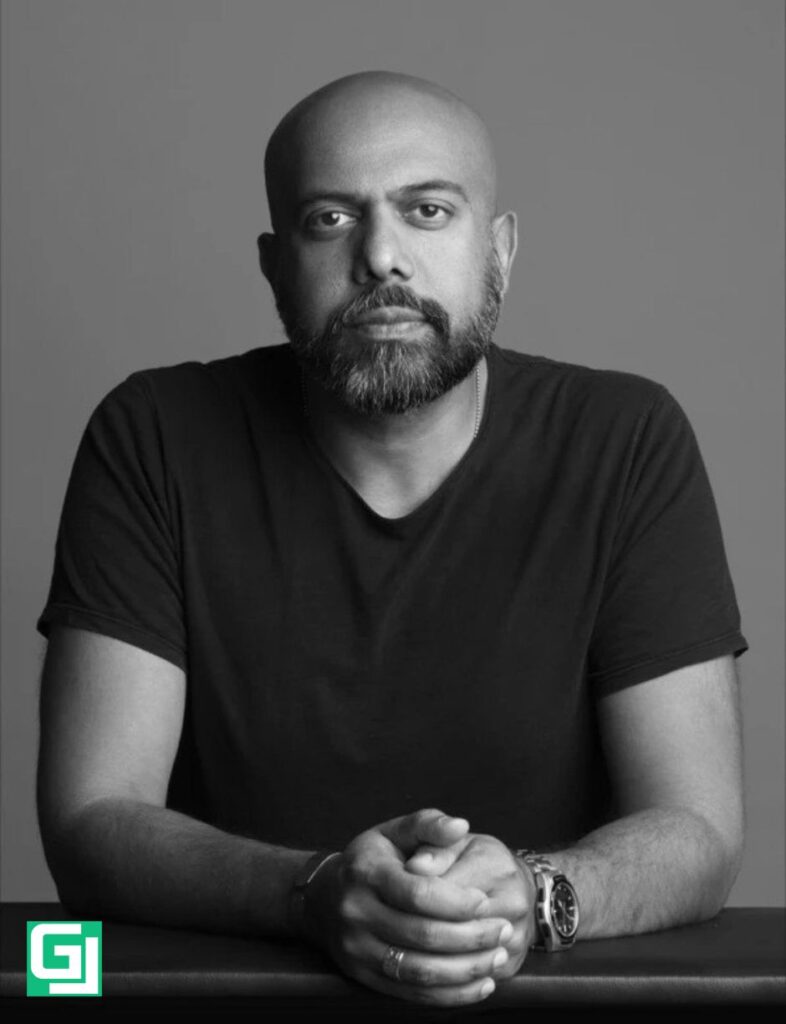When we talk about the architects of modern technology, Imran Chaudhri stands tall among the few who reshaped how humans interact with devices. Known widely as one of the creative minds behind the iPhone’s user interface, Chaudhri has since moved on to an even more ambitious mission—reshaping the relationship between humans and artificial intelligence through his company Humane.
This journey from Apple to Humane is not just about designing products; it is about reimagining the future of human–AI interaction. Today, his name resonates not just in tech circles but also in conversations about ethics, design philosophy, and what comes after the smartphone era.
Early Life and Imran Chaudhri’s Birthplace
Born in the United Kingdom, Imran Chaudhri’s birthplace laid the foundation for his multicultural identity. His early years combined curiosity, creativity, and a fascination for design. He later moved to the United States, where his career would take a decisive turn after joining Apple in the mid-1990s.
The blend of Eastern heritage and Western opportunity influenced Chaudhri’s outlook. He was not just building software; he was thinking deeply about how humans connect with machines. This duality is what later made him a pioneer in user-centric design.
Joining Apple: A Visionary’s Beginning
In 1995, Imran Chaudhri became part of Apple, a company that was just beginning to reclaim its place as an innovation powerhouse. His role was initially focused on the Mac interface, but his skills quickly became indispensable.
Apple at that time was a playground for designers and engineers willing to push boundaries. Chaudhri’s work ethic, sharp eye for design, and relentless curiosity soon earned him recognition inside the company.
Designing the iPhone and Beyond
The turning point in Chaudhri’s career was his role in designing the iPhone interface. When Steve Jobs introduced the iPhone in 2007, the world witnessed a revolution in how technology fits into our daily lives. Behind the sleek icons and intuitive gestures was Imran Chaudhri’s design philosophy.
- He helped create the iPhone’s home screen grid system.
- He shaped how gestures became natural—swiping, pinching, and tapping all stemmed from his team’s work.
- He contributed to the Apple Watch, iPod, and iPad, leaving an indelible mark on Apple’s product design DNA.
His designs were not just functional but intuitive—making technology invisible while amplifying human potential.
The Transition: Leaving Apple to Build Humane
After more than two decades, Chaudhri decided it was time for a new chapter. In 2016, he left Apple and co-founded Humane with his wife, Bethany Bongiorno. This transition reflected a bold move: leaving behind the security of Apple to pursue a mission of rethinking personal technology.
The vision was clear: build devices and platforms that restore humanity’s relationship with technology. Rather than trapping us behind screens, Humane’s mission is to create AI that feels natural, ambient, and supportive.
Humane and the AI Revolution
At Humane, Imran Chaudhri positioned himself at the center of a new AI revolution. Instead of relying on smartphones, the company is designing technology that blends seamlessly into human life.
Their flagship product, the AI Pin, embodies this philosophy. It is not about apps or notifications but about context, intelligence, and real-time assistance. Humane is about more than just gadgets—it is about trustworthy, human-first AI.
Bethany Bongiorno and Imran Chaudhri: A Partnership in Vision
Chaudhri’s work at Humane would not exist without his partner and co-founder, Bethany Bongiorno, who also played a vital role at Apple as Director of Software Engineering. Together, they form a dynamic duo with complementary strengths—design vision from Chaudhri and technical execution from Bongiorno.
This partnership was highlighted in several interview Humane Bethany Imran Chaudhri AI features, where they discussed building technology that respects user privacy and empowers creativity rather than addiction.
TED Imran Chaudhri and the Idea of the Disappearing Computer
In one of his most thought-provoking talks, TED Imran Chaudhri the disappearing computer tags, he emphasized a future where computers do not dominate screens but fade into the background of human life.
The “disappearing computer” concept suggests a world where technology is everywhere but visible nowhere. It quietly assists us without demanding constant attention—a sharp contrast to today’s screen-dominated lives.
Humane’s AI Pin: What Sets It Apart
The AI Pin is Humane’s first major product, and it reflects Chaudhri’s long-held belief that personal technology must evolve:
- Screenless design: Projects onto surfaces rather than trapping attention.
- Voice and gesture interface: Interaction feels natural, not forced.
- AI-first system: Contextual intelligence that adapts to the user.
- Privacy-first philosophy: Built to protect rather than exploit user data.
This is not just another gadget—it is a philosophy in hardware form.
Why Imran Chaudhri’s Work Matters Today
In a world drowning in notifications, digital addictions, and shrinking attention spans, Imran Chaudhri stands as a voice of reason. His designs ask hard questions:
- Are we controlling technology, or is it controlling us?
- Should AI amplify human creativity instead of replacing it?
- Can design bring back balance between digital life and real life?
Through his career—from Apple to Humane—Chaudhri has been consistent in one thing: humanity must always come before technology.
Conclusion
The journey of Imran Chaudhri is not just the story of a designer; it is the story of how technology should evolve with responsibility. From his birthplace in the UK to the iconic stages of Apple and now the ambitious future of Humane, he embodies innovation with conscience.
By reimagining technology through Humane’s AI Pin, Chaudhri is attempting to move us past smartphones and towards a more balanced, human-first future.
As the world debates the future of AI, one thing is certain: Imran Chaudhri’s vision will remain central in shaping how we coexist with machines.

